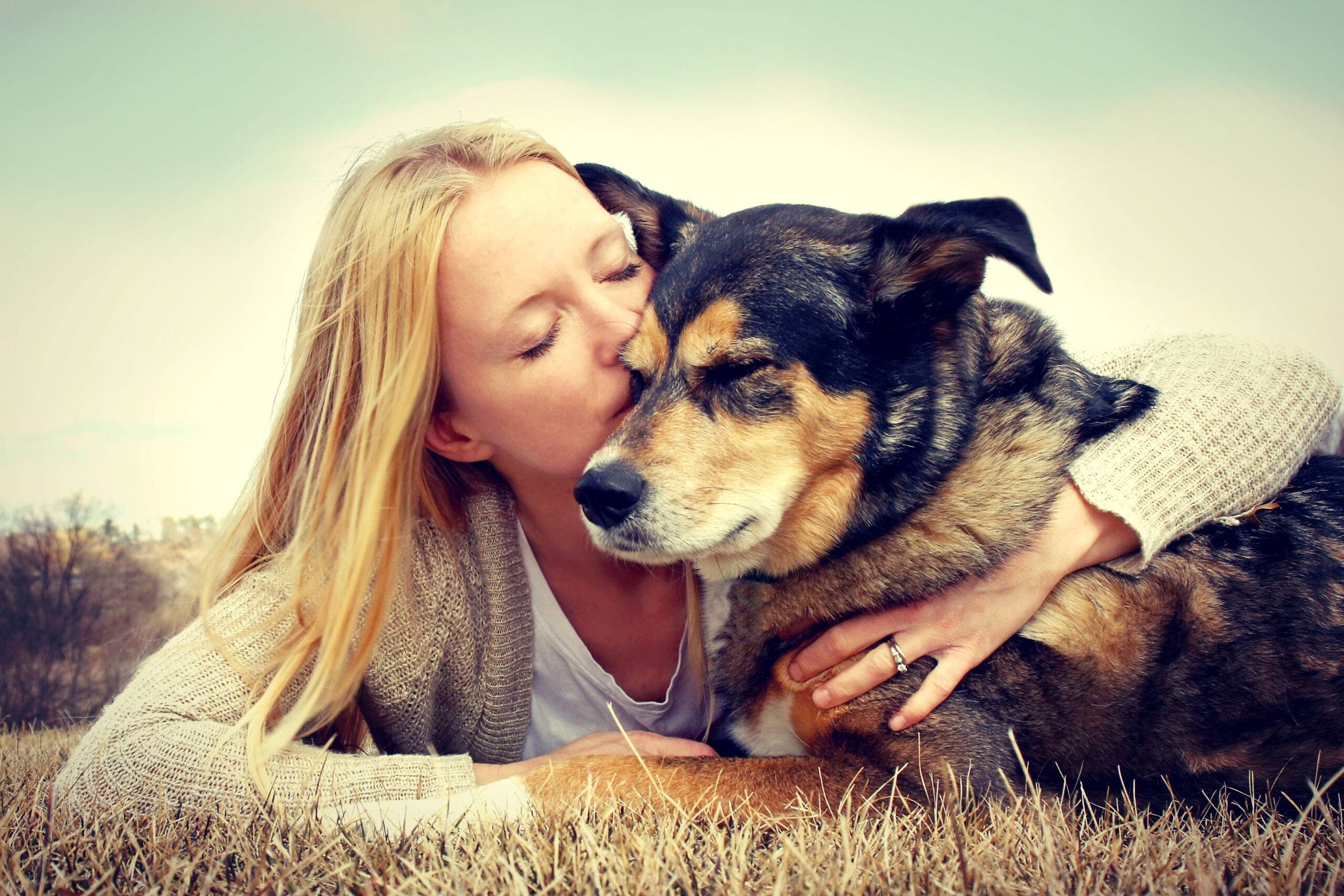Dog adoption and rescue
Understanding a rescue dog’s past and behavior
Hi, fellow dog lovers! As we all know, rescuing a pup is an incredibly rewarding experience. But sometimes it can be difficult to understand why our rescue dogs are behaving the way they do. That’s why I wanted to write this article about understanding a rescue dog’s past and behavior.
In these two paragraphs, I’ll outline what you need to consider when trying to get to the root of your new pup’s issues – so that you can give them the love and support they deserve!
Rescue dogs come with some unique challenges – but they also come with plenty of heart and promise too. With patience and care, you can help your furry friend adjust to their new life in no time at all.
So let’s dive into how you can better understand your pup’s past and current behaviors, giving them the best chance for success in their forever home!
Assessing Your Dog’s History
When you adopt a rescue dog, it’s important to understand its past and any potential triggers that may have caused certain behaviors. Evaluating these factors is key in developing the empathy needed for a successful human-canine bond.
To start, I recommend talking to the people who knew your new pup before they came into your life — whether from the shelter or foster home — as this can provide valuable insight into their history and personality. Ask questions about what kinds of experiences they may have had: did they live in an abusive home? Did they lack training? Were there other animals around them?
This information will give you some idea of why they act the way they do so you can begin to assess their triggers. Understanding how events and environments impact your pet’s behavior allows us to better prepare ourselves when approaching difficult situations. It also helps us become aware of our own actions so we don’t inadvertently cause harm or distress to our dogs.
With patience and practice, we can learn how to create a secure space where both humans and dogs feel safe and supported.
Learning About Your Dog’s Breed
Hey there dog lover!
You know the feeling of bringing home a new pup, and all the excitement that comes with it. As you get to know your rescue pup better, understanding their breed can help to identify some traits they may have inherited from their parents and understand what kind of socialization needs your pup might need.
Now when it comes to identifying the breed of your rescue pup, this isn’t always an easy task. However, if you start by looking at physical characteristics like coat type or color, weight and size, ear shape, muzzle length; then these features can give you clues as to which breeds are similar in appearance.
It’s also important to consider how those physical traits match up with other behaviors such as activity level or trainability too.
Once you’ve identified potential breeds based on looks alone, research into each one and compare them against any stories you may have heard about your dogs past life before coming home with you – both behavioral tendencies and medical history for example.
This will further inform which breed(s) best matches up with your pup’s unique characteristics. Knowing more about the breed will help you create a training plan tailored specifically for your beloved pet so that you can make sure they are harnessing their full potential every day!
Recognizing Signs Of Stress And Anxiety
I’m sure we’ve all experienced those moments of pure joy when our pup runs around, tail wagging and tongue out. But what if your rescue pup isn’t quite so happy?
Understanding the signs of stress and anxiety in a dog can be challenging but is an important part of creating a secure environment for them to thrive.
The first step towards helping your pup feel more relaxed is learning how to recognize their individual behaviors. While every dog’s personality will differ, there are some common signs that they may not be feeling comfortable or safe. These include pacing, panting heavily, excessive barking, cowering or hiding away from people, and destructive chewing.
Positive reinforcement and reward based training can help create trust between you and your rescue dog. This type of approach builds up positive associations with situations that were previously difficult for them. Once this bond has been established it will become easier to identify triggers for anxiety as well as how best to provide comfort during these times.
Being aware of any behavior changes helps us to better understand our pups needs and ensure their wellbeing is always taken into account.
Creating A Positive Environment
Now that we’ve talked about recognizing signs of stress and anxiety in rescue dogs, it’s time to talk about creating a positive environment.
It all starts with your attitude. If you approach your pup with positivity, they’re more likely to respond better.
Positive reinforcement is key when it comes to training any dog, especially rescues who may have had bad experiences in the past. Offering treats or praise for good behaviors helps them understand what behavior you want from them.
You can also use reinforcement schedules such as reward-based systems like clicker training which reinforces desired behavior through sound and treat rewards.
Creating a safe space for your pup is also essential to help reduce their anxiety levels. Make sure they have access to food and water at all times and provide them with plenty of toys and chewies that are appropriate for their size.
Give them lots of opportunities to explore different smells, sounds and textures while making sure they feel secure in their surroundings by providing comfy bedding options throughout the house.
Remember: patience is key!
Developing A Training Plan
I’m sure every dog lover out there knows the joy of seeing a rescue pup blossom into their true selves. It’s an amazing transformation that I’ve had the pleasure to witness first-hand, and it’s all down to developing a training plan!
Building trust is essential when working with any kind of animal, but especially so in rescue dogs who may have experienced trauma in the past. As you start to get to know each other, make sure your voice is calm and reassuring – this will help build the bond between the two of you.
Positive reinforcement also works wonders; reward them for good behavior and they’ll quickly learn what pleases you!
When it comes to reinforcing rules, give clear instructions and be consistent with how you enforce them. If your pup gets something wrong one day don’t let it slide on another day if they do it again.
Being predictable helps them to understand boundaries, as well as giving them security and stability which are so important for their wellbeing.
It can take time for a new relationship between owner and pet to develop, especially after difficult experiences like being rescued from a shelter or pound, but perseverance pays off eventually!
Conclusion
When it comes to understanding your rescue dog’s past and behavior, the key is patience.
As a dog lover, you understand that every pup is unique and has their own needs.
With some time devoted to research and training, you can build trust with your new furry friend and create a positive environment for them to thrive in.
By learning about their breed, recognizing signs of stress or anxiety, and creating a plan tailored specifically to their needs—you’ll be able to help your pup adjust quickly into their forever home!
Dog adoption and rescue
The process of adopting a rescue dog

Hey there, fellow dog lovers!
I’m sure you’ve heard the phrase ‘rescue dogs are the best dogs’ – and it’s true.
Adopting a rescue dog can bring so much joy to your life, as well as providing a loving home for an animal in need.
But before you take the plunge into pet parenthood, there are some important things to consider when it comes to adopting a rescue pup.
In this article, I’ll give you all the info you need to know about how to prepare yourself for bringing home a furry friend from a shelter or rescue organization.
So let’s get started!
Researching Your Rescue Options
When I started looking into adopting a rescue dog, the first thing I did was research my options. Pet shelters and rescue groups are both great places to look for pups in need of homes.
Rescue groups tend to be more specialized, so if you have an idea of what kind of pup you’re looking for it’s usually easier to find them through one of these organzations than at a pet shelter.
Doing your research is key when it comes to rescuing dogs – making sure that their needs can be met is incredibly important! Find out which organizations are reputable by asking around or checking online reviews before committing to any particular one.
It’s also wise to visit the facility yourself if possible, as this gives you a chance to observe the environment and meet some potential pups face-to-face.
Once you’ve narrowed down your list of prospective rescues, call them up and make sure they have the breed (or type) of dog that you want. Ask about the adoption process: how long does it take? What paperwork will you need? How much do they charge?
Getting all this information beforehand will help ensure that everything goes smoothly on adoption day!
Preparing Your Home And Family
I’m so excited to welcome my new rescue pup into the home! Before I bring them in, though, it’s important that I make sure everything is set up right.
Gathering all the supplies I need for a successful transition is key. From food and treats to toys and bedding, there are lots of things to consider before bringing my pup home.
Training is another crucial step that will help ensure a smooth integration process. It can be intimidating at first but with research and patience, training techniques become easier over time.
Positive reinforcement works best when teaching commands like “sit” or “stay”, as well as introducing good habits such as housebreaking and chewing only designated items.
Most importantly, everyone in the family must understand the commitment involved in caring for a dog and be prepared to give love and affection throughout their life together.
With clear expectations and proper preparation, you can create an environment where your rescue pup feels safe, loved, and happy—and ultimately develops into a healthy part of your family.
Choosing The Right Dog For You
When it comes to selecting a rescue dog, the process can be both exciting and overwhelming. The key is to find a pup that fits your lifestyle while being mindful of the time and patience needed for adapting him or her into their forever home.
While interviewing shelters is an important part of this process, assessing your own needs is also crucial. First off, consider what type of pet would fit best with your family size, activity level, space availability and budget. Also ask yourself if you’re willing to make certain changes in order to meet the needs of a new furry friend – like adding gates or fence panels around high-traffic areas in your house or cutting back on long work hours?
Once these questions are answered, you’ll have a better idea on how much energy and commitment you need to provide so that he or she will thrive in their new home. Another factor when adopting a rescue dog is understanding his/her behavioral history. If possible inquire about any documented medical treatments given due to past trauma and if there were any instances of aggression during previous adoption attempts.
Knowing this information ahead of time allows you determine whether the pup has had proper socialization experiences and if they possess skills necessary for living peacefully within its environment – such as not barking excessively at strangers or jumping up onto furniture without permission. Taking all of these factors into account helps ensure that everyone involved in the adoption journey gets along happily ever after!
Making The Adoption Process Smooth
Adopting a rescue dog is an incredibly rewarding experience that can bring so much joy and love into your life. I’m here to tell you, it’s totally worth the effort! But before making any final decisions or starting on this journey, there are some important steps that need to be taken to make sure everything goes smoothly.
Vet screening and adoption counselling are two essential components of the process – and they will help ensure you find the best possible match for both yourself and your new pup.
Vet screenings take place after the initial application process has been completed. A qualified vet looks over all relevant medical records and checks that your chosen pet meets all necessary health standards. This helps guarantee a smooth transition once you finally have them in their forever home with you.
Meanwhile, adoption counselling provides invaluable advice for finding the perfect companion who suits both yours and their needs as individuals. It involves having conversations about lifestyle changes, expectations and how best to provide support during those first few weeks of settling in together.
It may seem like extra work but trust me when I say these small steps go a long way towards ensuring everyone involved feels comfortable and secure throughout the entire adoption process. And at the end of it? You’ll have found a furry friend for life – one that fits perfectly into your family dynamic!
Ensuring A Positive Transition For Your New Dog
I’m so excited that you’re adopting a rescue dog! Making sure your pup has a successful transition into their new home is key.
To get started, I recommend interviewing shelters and evaluating behaviors in potential dogs before selecting the right one for your family. This process can help to ensure that your pup’s existing habits will be able to fit with your lifestyle and expectations of them.
Once you’ve selected the pup who seems like the best fit for you, it’s time to bring them home! Before bringing them over, make sure all necessary supplies are purchased and ready – things like food dishes, toys, treats, leashes, beds etc.
It can also be helpful to introduce smells from your home prior to their arrival such as putting a blanket or clothing item with your scent on it in their crate or bed.
Having an area set up specifically for your pup when they arrive can help during this transition period as well. Providing familiar items such as old blankets or toys from their previous owner (if available) may provide comfort while they adjust to their new environment.
Additionally, providing plenty of positive reinforcement in the form of praise or treats throughout these early days will help create happy memories and encourage good behavior going forward!
Conclusion
Adopting a rescue dog can be an incredibly rewarding experience, both for you and the pup. By taking your time to research, prepare and select the right fit, you will help ensure that your new four-legged family member transitions smoothly into their forever home.
We are so proud of you for considering adoption and giving one of these deserving dogs a second chance at life! Good luck on this exciting journey – we know it’s going to be filled with lots of unconditional love from your furry friend.
-

 cats8 months ago
cats8 months agoHow to Get Your Cats to Stop… Everything You Hate: Every No Needs a Yes!
-

 All Animals1 year ago
All Animals1 year agoALL about Lagomorphs Explained!
-

 All Animals11 months ago
All Animals11 months agoExplore the Wilderness: ALL about Carnivores Unleashed!
-

 Animals1 year ago
Animals1 year agoThe Wonders: ALL About Artiodactyls
-

 Cat Breeds7 months ago
Cat Breeds7 months agoWhat Are Some Rare Domestic Cat Breeds?
-

 Cat Breeds7 months ago
Cat Breeds7 months agoWhat Are the Top Family-Friendly Domestic Cat Breeds?
-

 Cat Breeds7 months ago
Cat Breeds7 months agoTop Family-Friendly Domestic Cat Breeds
-

 Cat Breeds7 months ago
Cat Breeds7 months agoDiscover Rare Domestic Cat Breeds With Our Guide



















